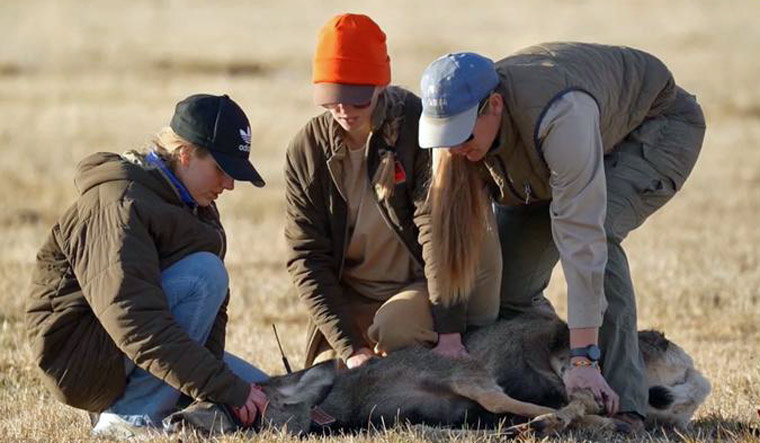The disease is known to affect deer and elk populations
Web Desk Updated: February 21, 2024

Canadian scientists are wary about chronic wasting disease (CWD), also known as the zombie deer disease spreading to humans. The fatal infection is a neurological condition, which kills almost every animal it infects. The infection is rapidly spreading among the deer population in the US. And the affected deer are left drooling, stumbling, lethargic and with a blank stare.
The disease is known to affect deer and elk populations. The fatal disease is caused by misfolded proteins known as prions and as per a Guardian report, scientists fear that it could evolve and soon affect humans.
Canadian authorities have ordered the testing of any road-killed deer, elk, moose or caribou to mitigate its spread. Once infected, it takes about a year for the animal to manifest symptoms like drastic weight loss, drooling, lack of fear of humans, listlessness, lack of coordination, excessive thirst or urination.
Two cases were reported-- in a mule deer and a white-tailed deer in January, in Kootenay, Canada. About a week ago a case was confirmed at the Yellowstone National Park in Wyoming, US.
According to scientists, CWD affects non-human primates, monkeys, is highly possible. “Since 1997, the World Health Organization has recommended that it is important to keep the agents of all known prion diseases from entering the human food chain,” a warning issued by the Centres for Disease Control and Prevention reads.
According to scientists, the disease is probably transmitted via bodily fluids. Transmission could also occur indirectly through environmental contamination, affecting soil, food, or water. According to the CDC, the disease has no cure or vaccine. And what makes it more dangerous, is the prions can persist even after an infected deer or elk has perished, which means other animals could catch the infection from the contaminated surroundings.
No comments:
Post a Comment